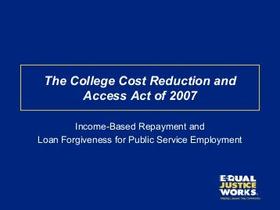How to Support a Teen Balancing Community College and Work
Balancing community college coursework with a job is increasingly common—yet also challenging. According to national data, nearly 70 percent of community college students work while enrolled, often out of necessity.¹ At the same time, working more than 20 hours per week has been linked to slower progress, higher stress, and lower completion rates.² For parents, educators, and mentors, knowing how to support teens in this juggling act can make the difference between burnout and success.
This article offers evidence-based strategies, real-world examples, and actionable tips for helping a teen thrive academically, financially, and personally in the current year.
Why It Matters: Risks & Opportunities
The Stakes Are High
Time pressure and burnout: Working too many hours cuts into study time, rest, and opportunities for campus engagement.
Attrition risk: Students juggling heavy workloads are more likely to stop out or lose academic momentum.³
Financial stress vs. benefit: Many students work to meet basic needs. Some jobs, when aligned to their academic field, can reinforce learning and career relevance.⁴
The Upside
Skill development: Time management, professional communication, and resilience are earned through balancing responsibilities.
Networking & career alignment: Jobs tied to a student’s field of study can provide early experience and resume strength.
Ownership & autonomy: Successfully balancing demands helps teens feel agency and confidence.
A Framework for Support
Think of supporting a working student in three overlapping realms: structure, advocacy, and wellness. Each domain reinforces the others.
1. Establish Structure: Planning, Systems, & Flexibility Help Them Build a “Master Calendar”
Encourage your teen to adopt a weekly calendar (digital or physical) that tracks:
| Phase | Action Items for Parent / Mentor | Student Action Items |
|---|---|---|
| Before Semester | Discuss anticipated work load and course options | Map out work schedule, pick balanced course set |
| Weeks 1–3 | Encourage sharing constraints with professors | Adjust schedule, request accommodations early |
| Mid-Semester Review | Check in regularly (grades, stress levels) | Adjust work hours, course load, or support usage |
| Crisis or Transition | Advocate (e.g. liaise with advisors) | Consider taking a lighter load or temporary leave |
| End of Semester | Reflect, celebrate successes, identify lessons | Plan next semester with improvements based on experience |
Time-management and planning tools are foundational.⁵
Prioritize Course Load and Sequencing
Support them in selecting course loads and scheduling (day, evening, online) that match their work hours. Encourage strategic sequencing—take demanding classes in lighter work weeks or off-peak semesters.
Advocate for Flexibility
Help your teen talk with instructors early in the semester, explaining their work commitments and asking about:
Alternate due dates (for legitimate conflicts)
Lecture recordings or asynchronous options
Office hours arrangements
Group project scheduling that accounts for work shifts
Institutions and faculty are more likely to offer accommodations when they know a student’s constraints.⁶
2. Lend Your Voice: Financial, Institutional & Emotional Advocacy Navigate Financial Support
Many students remain unaware of essential financial resources:
Emergency grants or hardship funds
Scholarships or work-study programs
Tuition assistance, subsidies, or on-campus job stipends
Credit for prior learning, competency-based credits
Encourage your teen to consult the financial aid office early and often.
Partner with the Institution
Parents and mentors can encourage colleges to strengthen supports for working students—such as more evening classes, on-campus work placements, dedicated advising, or childcare resources.⁷
Monitor Signs of Strain
Observe red flags like chronic fatigue, declining grades, irritability, or disengagement. Open a supportive dialogue and explore whether the student needs to reduce hours or adjust their coursework.⁸
3. Protect Wellness: Boundaries, Self-Care & Community Build Guardrails
Limit work hours thoughtfully: Many practitioners recommend not exceeding 15–20 hours per week during semesters.
Designate “off” time: Block regular periods for rest, exercise, friends, or hobbies.
Encourage “micro-breaks”: Though small, 5–10 minute pauses can refresh attention.
Encourage Healthy Habits
Good sleep hygiene, nutrition, regular movement, and mindfulness practices buffer against stress. Counselors and campus support services are also key allies.
Maintain Connection
Working students often disengage from campus life. Help your teen stay connected:
Join student groups or virtual communities
Attend occasional social or academic events
Lean on peers, faculty mentors, and family support
A sense of belonging can sustain motivation.
Sample Support Plan Template
Here’s a sample roadmap parents or mentors can use:
| Phase | Action Items for Parent / Mentor | Student Action Items |
|---|---|---|
| Before Semester | Discuss anticipated work load and course options | Map out work schedule, pick balanced course set |
| Weeks 1–3 | Encourage sharing constraints with professors | Adjust schedule, request accommodations early |
| Mid-Semester Review | Check in regularly (grades, stress levels) | Adjust work hours, course load, or support usage |
| Crisis or Transition | Advocate (e.g. liaise with advisors) | Consider taking a lighter load or temporary leave |
| End of Semester | Reflect, celebrate successes, identify lessons | Plan next semester with improvements based on experience |
Real-World Example (2025 Update)
Imagine Aisha, a 19-year-old enrolled in a community college’s business program. She works 18 hours a week at a retail store to help pay for textbooks and living costs. In her second semester, she clamps her workload at 12 hours weekly, switches one in-person class to hybrid format, and requests exam flexibility from her professors. Her grades stabilize, she feels less overwhelmed, and she takes on a campus tutoring position related to her major—reducing commute time and building relevant experience.
This model reflects the best practice of aligning work, academic goals, and wellness. It also showcases that slowing down temporarily (reducing hours) often enables stronger long-term progress.
Challenges & Caveats
Inflexible work schedules: Some jobs don’t allow shift variation. Help your teen negotiate shift swaps or find more flexible roles.
Financial pressure: Reducing work hours might feel risky. Revisit scholarships or aid.
Emotional burnout: Even with structure, juggling demands remains taxing. Prioritize mental health check-ins and counseling support.
Stigma or perception: Some students hesitate to disclose work stress to instructors—encourage candid, professional communication.
Summary: A Balanced Path Forward
Supporting a teen in balancing community college and work demands requires vigilance, empathy, and coordination. Focus on three pillars:
Structure — systems and planning that make the juggle manageable
Advocacy — institutional and family support so the student isn’t isolated
Wellness — protecting physical, mental, and social health
By helping your teen build these foundations, you increase their chance of not only completing their associate degree (or certificate) but doing so with resilience and sustainable balance.
¹ According to ACCT, multiple reports show nearly 70% of community college students work while enrolled.
² Working more than 20 hours per week has been associated with lower academic progress and higher stress. Aperture Content Marketing
³ Surveys show faculty and staff often are unaware of students’ work commitments; such blind spots reduce responsiveness. Community College Daily
⁴ “The Busy Student’s Guide to Balancing Work and College” shows how aligned employment can reinforce academic goals.
⁵ See “Balancing School, Work, and Life: Strategies for Students” for time-management techniques. providenceready.org
⁶ Colleges offering more flexible arrangements and early dialogues help working students succeed. Aperture Content Marketing
⁷ Institutional best practices include on-campus job creation, flexible scheduling, and wraparound supports. Aperture Content Marketing
⁸ Experts highlight signs of strain and recommend timely adjustments for sustaining balance.















